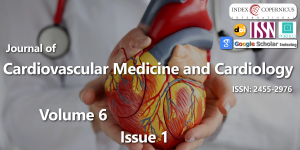Safety of Thrombolytic therapy at emergency department vs coronary care unit: A comparative study of 100 patients at tertiary Cardiac care centre
Main Article Content
Abstract
Objective: To determine the safety of thrombolysis (streptokinase administration) at Emergency department with comparison to coronary care unit of AFIC& NIHD, Pakistan.
Study Design: Comparative cross-sectional study.
Place and Duration of Study: Emergency department and coronary care unit of Armed Forces Institute of Cardiology & National Institute of Heart Diseases Rawalpindi, Pakistan from December 2016 till May 2017.
Material and Methods: All the patients with a confirmed diagnosis of acute myocardial infarction who were indicated for thrombolysis in emergency department (ER) and coronary care unit (CCU) during our study time period were included in the study through consecutive sampling. Demographic and clinical data of all patients were collected. Data was entered and analyzed in SPSS-23.
Results: A total number of 100 patients were recruited in our study. The mean age of the patients was 58.18±15 years with minimum age 22 years and maximum age 85 years. Males were more in number 85 (85.0%). 64 (64.0%) patients were given streptokinase at emergency department while 36 (36.0%) were thrombolysed in coronary care unit. The most common indication for thrombolysis at ER was anterior wall myocardial infarction 24 (24.0%). The most common risk factor was smoking history (47%) followed by family history (36%). Door to needle time was smaller in emergency department in comparison with CCU [18.8±1.4 min vs 23.5±2.0 min (p=0.04)]. Major adverse cardiac events during streptokinase administration were transient hypotension, arrhythmias, hemorrhage and mortality which were minimal in Emergency Department as compared to Coronary Care Unit. Patients were immediately treated for the events accordingly both in emergency department and coronary care unit.
Conclusion: Our study results yielded that thrombolysis with streptokinase was safe and effective at emergency department when compared with coronary care unit. Reducing door to needle time by considering thrombolysis at emergency department can improve the outcomes of patients.
Downloads
Article Details
Copyright (c) 2019 Saif S, et al.

This work is licensed under a Creative Commons Attribution 4.0 International License.
Zeraati F, Homayounfar S, Esna-Ashari F, Khalili M (2014) Fibrinolytic Therapy in CCU Instead of Emergency Ward: How It Affects Door to Needle Time? Int J Prev Med 5: 308–312. Link: https://goo.gl/UD5iGN
Atzema CL, Austin PC, Tu JV, Schull MJ (2009) Emergency department triage of acute myocardial infarction patients and the effect on outcomes. Ann Emerg Med 53: 736–745. Link: https://goo.gl/xRkKY9
Maleki A, Shariari A, Sadeghi M, Rashidi N, Alyari F, et al. (2012) Evaluation of fibrinolytic medical therapy for patients with acute myocardial infarction. ARYA Atheroscler 8: 46–49. Link: https://goo.gl/dokoN5
Kloner RA, Dai W, Hale SL, Shi J (2015) Approaches to Improving Cardiac Structure and Function During and After an Acute Myocardial Infarction: Acute and Chronic Phases. J Cardiovasc Pharmacol Ther 21: 363-367. Link: https://goo.gl/Y73TtF
Wolak A, Gilutz H, Amit G, Cafri C, Ilia R, et al. (2003) Door to balloon and door to needle: temporal trends in delays to reperfusion. Isr Med Assoc J 5: 852–855. Link: https://goo.gl/zwFXHC
Yaylali YT (2010) Door-to-needle times in acute myocardial infarction. Asian Cardiovasc Thorac Ann 18: 122–126. Link: https://goo.gl/UeyAd2
Irwani I, Seet CM, Manning PG (2004) Emergency physician versus cardiologist-initiated thrombolysis for acute myocardial infarction: a Singapore experience. Singapore Med J 45: 313–317. Link: https://goo.gl/FpL3Pb
Alishahi Tabriz A, Sohrabi MR, Kiapour N, Yazdani S (2012) Factors associated with delay in thrombolytic therapy in patients with ST-elevation myocardial infarction. J Tehran Heart Cent 7: 65–71. Link: https://goo.gl/inUcmk
Hosseini SK, Soleimani A, Salarifar M, Pourhoseini H, Nematipoor E, et al. (2011) Demographics and angiographic findings in patients under 35 years of age with acute ST elevation myocardial infarction. J Teh Univ Heart Ctr 6: 62–67. Link: https://goo.gl/gBvN9v
Dieker HJ, Liem SS, El Aidi H, van Grunsven P, Aengevaeren WR, et al. (2010) Pre-hospital triage for primary angioplasty directreferral to the intervention center versus interhospital transport. J Am Coll Cardiol Intv 3: 705–711. Link: https://goo.gl/p7rizH
Zed PJ, Abu-Laban RB, Cadieu TM, Purssell RA, Filiatrault L (2004) Fibrinolytic administration for acute myocardial infarction in a tertiary ED: factors associated with an increased door-to-needle time. Am J Emerg Med 22: 192–196. Link: https://goo.gl/uS4rMQ
Wu JR, Moser DK, Riegel B, McKinley S, Doering LV (2011) Impact of prehospital delay in treatment seeking on in-hospital complications after acute myocardial infarction. J Cardiovasc Nurs 26: 184–193. Link: https://goo.gl/XPgppD
Prasantha B, Idris MZ, Ahmad N, Agarwal M, Yadav SC, et al. (2013) Determinants of prehospital delay among patients attending cardiac emergency with acute chest pain of cardiac origin in Lucknow district. Int J Adv Res 1: 121–129.
Qian L, Ji KT, Nan JL, Lu Q, Zhu YJ, et al. (2013) Factors associated with decision time for patients with ST-segment elevation acute myocardial infarction. J Zhejiang Univ Sci B 14: 754–758. Link: https://goo.gl/iD4m49
Thylén I, Ericsson M, Hellström Ängerud K, Isaksson RM, Sederholm Lawesson S (2015) First medical contact in patients with STEMI and its impact on time to diagnosis; an explorative cross-sectional study. BMJ Open 5: e007059. Link: https://goo.gl/L8aYkH
Khalili H, Talasaz AH, Jenab Y, Salarifar M (2012) Clinical characteristics and risk assessment of ST-segment elevation myocardial infarction patients of an Iranian referral center. J Cardiovasc Med (Hagerstown) 13: 708–715. Link: https://goo.gl/U8JRN8
O'Gara PT, Kushner FG, Ascheim DD, Casey DE, Jr, Chung MK, et al. (2013) 2013 ACCF/AHA guideline for the management of ST-elevation myocardial infarction: Executive summary: A report of the American College of Cardiology Foundation/American Heart Association Task Force on Practice Guidelines. Circulation 127: 529–555. Link: https://goo.gl/5nFX6D





